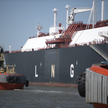Looking beyond Europe
Participants in the discussion strongly encouraged going beyond the markets of Europe. – “We work with our entrepreneurs to prepare them for export and to make it a bit more geographically remote. Exporting to EU countries is natural because we have an intra-community market. On the other hand, it is in our common interest that we export more to markets outside the EU. In this way, we are improving the gross result of the entire EU. We want to diversify our exports geographically and we encourage this. However, it is much easier to talk about this with entrepreneurs who are already exporting and more difficult with those who are just preparing for expansion”, said Paweł Kurtasz.
– “Polish exports have been a success story for many years. However, we should already be looking really broadly at the world map. As a bank, we financed trade with 85 countries around the world last year, which does not at all mean that we are limited to them. The openness of the Polish economy is currently higher than that of the German economy, but the fact is that we have so far concentrated our exports on the EU. This is natural because of Poland’s participation in the common European single market, but it also carries the risk of lack of geographical dispersion. Today, we are talking about reduced growth in our exports because we face the reduced GDP growth of our main customers. If GDP and demand there are falling, then the demand for foreign goods will also fall”, analysed Piotr Stolarczyk, head of international banking and trade finance at Bank Pekao.
– “It is therefore worth looking at the developing countries, as their long-term growth rates are expected to be significantly higher than those of our major EU trading partners. We should have the “other foot” of our exports in these distant countries because today they are relatively small there as Poland’s exports to non-European countries amount to 14% of our total goods exports”, said the representative of Bank Pekao. And, he added, every contract, whether export or investment, in developing countries is an opportunity to stay longer on a particular market.
– “In addition to their growth dynamics, these countries have other advantages — they are highly receptive and have extremely dynamic demographic trends. African countries are a good example. Global demographic projections indicate that by 2050, the continent will have the largest number of young people, i.e., potential customers for our goods. On top of this, the absorptive capacity of developing countries is due not only to demographics, but also to their integration. In the case of Africa, it is the African Union. Increasingly, therefore, we are talking not about one country, but a group of countries. The potential is huge”, encouraged Piotr Stolarczyk.
In turn, the PAIH president pointed to North America and the Middle East. – “We are currently working hard with the US market, which is very interesting and, despite appearances, is not at all more difficult than the French or German market in terms of legal conditions. At the same time, the US is a much more capacious market although, of course, each state should be treated separately, almost like another country. When preparing an export strategy, the US should not be considered as a whole”, Paweł Kurtasz pointed out. He also recalled that Polish companies, in particular food producers and distributors, are getting better and better at selling food in the Middle East, largely as a result of our country’s successful participation in the Dubai World Expo and Poland’s vibrant political and economic relations with the United Arab Emirates and other Gulf countries.
EU funds as an incentive
But how do we encourage more SME companies to export and capitalise on overseas expansion? Preferably financially. – “Also in this perspective, entrepreneurs are the main recipients of EU subsidies. These include funds from sixteen regional programmes for the closed-loop economy, greening the economy, the development of modern enterprises, but also precisely for export support and the promotion of an entrepreneur’s product/service brand on international markets. And this is primarily for companies in the SME sector”, stressed Małgorzata Jarosińska-Jedynak.



























